The Crosshair VI Extreme is the latest 2017 flagship X370 model coming from Asus, it was only officially announced in July.
The last (and till then, the sole) Asus AMD Crosshair Extreme motherboard was the 890FX based Crosshair IV Extreme that debuted roughly 7 years ago which is an eternity in the computing world.
This year, the clarion success of AMD Ryzen in the past few months has convincingly encouraged Asus to produce a brand new AM4 flagship in this new X370 model, superseding the earlier Hero. There were murmurings amongst fans asking why AMD Ryzen owners only got a
relative lowly ROG Hero level model while many ROG Extreme models have
emerged for the competition. Asus have probably heard them loud and
clear and answered.
Thus, kudos to Asus and AMD for making the long staid PC platform exciting all over again.
Asus Product Page
Features
- AMD X370 EATX gaming motherboard
- Optimal Cooling - compatible with AM3/AM4 Coolers, water cooling headers zone
- Aura Sync RGB LED - two Aura 4-pin RGB-strip headers and one addressable header
- DDR4 3200MHz and more
- Dual M.2 with integrated PCH M.2 heatsink
- USB 3.1 Gen2
- Networking - Intel Gigabit Ethernet, LANGuard GameFirst and 2x2 802.11ac Wi-Fi with MU-MIMO support
- SupremeFX S1220 teamed with Sonic Studio III
Upgraders
For current PC owners who are thinking of swapping out their motherboard for this new Extreme, do bear in mind that this model comes in the larger extended ATX form factor just like the old Crosshair IV Extreme.
One other consideration is the cable clearance at the front of the motherboard where this new model has a rotated flat down main 24 pin ATX power connector as shown below. Meanwhile, also check out the glorious full length strip of LED lights right beneath the PCB - more RGB blazing power!
Asus says "Our designers used a monochromatic palette that won’t conflict with other components or your choice of accent lighting. RGB lighting is expected at this point, but the Extreme doesn’t just add some bling and call it a day. It’s one of the first motherboards with a header for addressable light strips and that offer control of each individual LED."
Motherboard Layout
Useful guide to getting around this very busy ie. feature packed motherboard.Packaging & Unboxing
The retail box comes in the classic distinctive ROG colours of red and black but wow, this box is big and really heavy from the massive motherboard heatsinks and plates. A build for the overkill... :)

Stickers and case badge galore for the ROG fan.
Overflowing with bundled accessories.
Bundled fanbus
The Motherboard
All done in stealthy dark colours, suitable for any custom colour theme. Note the reinforced RAM slots as evidenced by the metal strip near the middle.Pre-mounted I/O shield featuring gold plated wifi and audio connectors, the latter are actually LED colour coded - useful and very pretty at night. Pre-mounted shield design means finally no more forgetting the I/O shield before installing the motherboard. lol
ROG Heatsink Branding
A gleaming heatpipe connects the 2 power mosfet heatsinks, most visible near the ATX12V power plugs (8+4 pins). Southbridge sink features the integrated M.2 cooling.
Even the 2 main slot locking tabs are of transparent plastic with underlying LEDs.
Latest SupremeFX S1220 audio codec.
A well featured region running along the edge of the mobo, check out the numerous fan and LED headers sported there.
SATA ports and the front USB3.1 headers x 2.
ProbeIt points, debug LED, fan connectors and onboard buttons galore in this rather intense little corner.
Both AM4 and AM3 mounting holes are again available, creating the possibility of using older coolers on this motherboard immediately out of the box.
Metal reinforced PCI-e slots x 2, open ended x4 slots x 2.
UEFI
Featuring the deservedly renowned Asus ROG UEFI BIOS, the sample set came with a pre-production version which was quickly updated to the sole final version available ie. 0401 obtained from the official Asus support site.Be very patient during the updating process as the entire procedure entails a few restarts.
Layout of the Extreme UEFI is very similar to its Hero predecessor, you can refer to sample shots here. Likewise, it may take 1-2 (RAM oc dependent) restarts from cold once any overclocking is done so keep the power connected to avoid that.
A few notable differences include the reporting of CPU temps on the debug LED display, exclusion of the AM4 Advance Memory Training etc.
The official BIOS 0401 is based on AGESA 1.0.0.6 and unlike the older Hero, beta versions are currently not so readily available at the moment. AMD have improved RAM compatibility gradually and AGESA 1.0.0.6 already enables most commonly available RAM to run overclocked, at or close to their rated specs.
Despite its nascent maturity, the BIOS appears capable enough and is fully equipped for overclocking. Thus far, the overclocking experience appears to be straightforward and stable in this motherboard. Overclocking for 24/7 operation is best done via p-state controls available in the AMD CBS options.
Recovery from failed RAM overclocking is very graceful, not once was CMOS clearance required during the inumerous attempts at pushing the RAM. Overall operational stability seems improved, not a single dreaded "q-code 8" was seen so far.
Some sensor monitoring utilities may need to be updated to fully support this model. hwinfo64 appears to do relatively well compared to others eg. OCCT in reading the onboard sensors. One strange reading seems to be a exquisitely low VDDP of 0.065V which is similarly reported by both the BIOS and hwinfo64.
Test Setup
Asus Crosshair VI Extreme | AMD Ryzen 5 1600@3.85GHz | Various RAM | Intel 530 SSD | WD Black HDD | Zalman CNPS10X Quiet | Win 10 x64 CreatorOpen air caseless, SG ambient 27C
Kingston Predator DDR4-3000@DDR4-3200
2 x 4GB Hynix MFR DDR4-3000 single rank sticksEasily overclocked to reach DDR4-3200 on the Crosshair Extreme, running nicely cool and stable. These are the old Kingston Predators DDR4-3000 from the year 2014 (ie. X99 era).
CPU-Z Bench
Cinebench R15
Passmark CPU Bench
Geekbench 4
AIDA64
Fritz Chess Benchmark
hwbot Bench
WinRAR
Corsair Vengeance CMK32GX4M2B3200C16
2 x 16GB dual rank DDR4-3200C16@3066C14This 32GB RAM kit ran great at 3066MHz and was also able to POST at 3200MHz but it was not fully stable. 32GB dual rank RAM is noticeably tougher to achieve stability at higher speeds but it is also likely sub-par personal DDR4 kungfu (sniff, sniff). Other possible culprits include R5 IMC, dual rank RAM issue, 1st BIOS release, voltage, time, patience, AGESA, Obama etc...
Dual rank RAM still has its benefits though as you may notice that a few benches actually score higher than the faster Predator RAM kit used earlier.
CPU-Z Bench
Cinebench R15
Passmark CPU Bench
Geekbench 4
AIDA64
Fritz Chess Benchmark
hwbot x265 Bench
WinRAR Bench
Samsung B die
Running 2 x 8GB single rank sticks ie. the ideal Ryzen RAM at DDR4-3200 is a non-challenge. It's almost a PnP process getting there and it allows room for further overclocking too eg. tightening timings or going beyond 3200MHz with more tinkering.Other RAM
Other RAM tested include 2 x 8GB kits of Corsair CMK16GX4M2B3000C15 single rank Hynix AFR which ran stable overclocked at 3066MHz C14 and G.Skill F4-3000C15D-16GVRB dual rank Samsung E die which ran at 2933MHz.Of course, everyone knows by now that the ideal Ryzen RAM kit is the 2 x 8GB single rank Samsung B-die kit. However, since Ryzen's debut, DDR4 esp. such 2 x 8GB Samsung B-die kit prices have really soared so meanwhile still having some fun tinkering with older kits.
Daily Usage
Rig testing, Spotify, surfing, downloading and gaming over a few hours confirms a very cool running rig.Initial Impressions
Presently, it's still very early days for AMD AM4 platform, approximately a scant 6 months have elapsed since the debut of Ryzen. Even then, Ryzen has seriously shaken up the PC world (and a complacent Intel), this Extreme model is likely meant for the more hardcore ROG user or fan and is probably an overkill for many users since the current Ryzen stepping seems clock limited to ~ 4GHz.For those who do love overkill and extreme hands on tinkering, this should be a very exciting investment as Asus has clearly shown its track record of intense commitment to polishing up their high end AM4 motherboards in the earlier Hero model. Countless beta and final UEFI BIOS versions have been released since, alongside the AGESA improvements from AMD.
Pros
- Industry leading UEFI with straightforward great overclocking
- Feature packed eg. dedicated base-clock generator, onboard Wifi/Bluetooth, dual M.2 etc
- Quality components eg. latest SupremeFX S1220 audio codec, Intel G.LAN, digital power controller etc
- Beautiful design with well thought out layout functionality
- AM3/4 mounting holes for CPU coolers
- Water cooling support
- Heavily built with large backplate, piped heatsinks, integrated M.2 heatsink
- Lots of RGB bling with BIOS level toggle control
Can be improved
- Paucity of onboard USB2 headers
- Power cycling on cold starts (side effect of Asus RAM tuning)
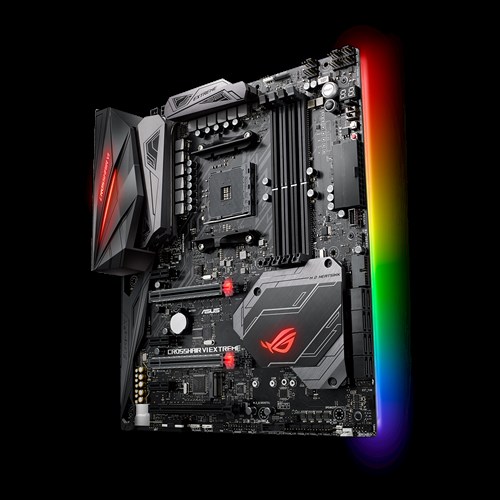
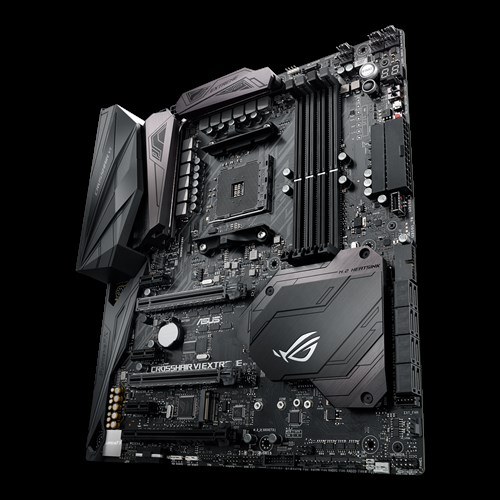
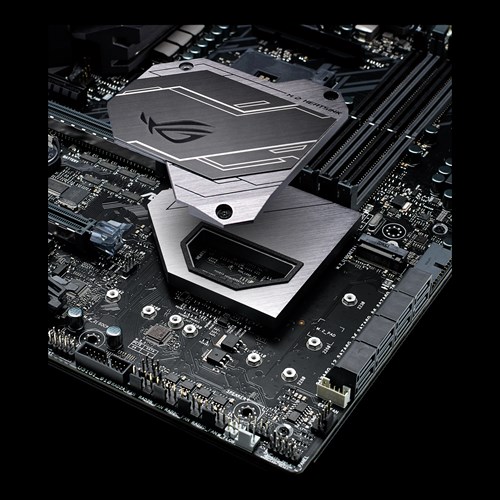
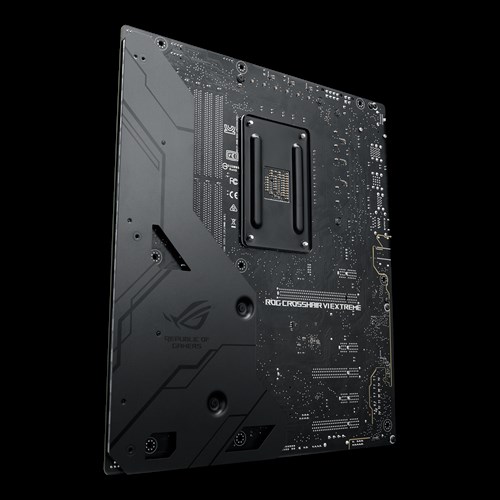









































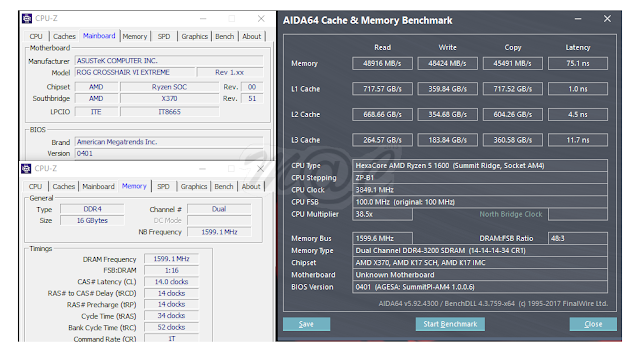

No comments:
Post a Comment